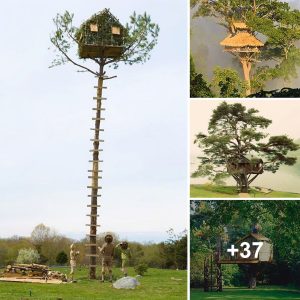In the vast world of nature, the diversity of plants is nothing short of astonishing. Plants exist not only to fulfill human needs for food, medicine, and building materials, but they also showcase unique and peculiar shapes, displaying the marvelous creativity of nature.
The formation of these oddly-shaped trees often arises from a complex interplay of biological factors, the environment, and evolution. Some renowned trees with distinctive forms include:
1. Baobab Tree: The Baobab tree, also known as the African bottle tree, features a massive trunk with a shape resembling a classic bottle or wine container. This shape’s formation can be attributed to the tree’s ability to store water in arid desert environments.

2. Joshua Tree: Joshua trees, found in the American desert, have branches that reach skyward like outstretched fingers. This shape aids in withstanding earthquakes and strong winds in the harsh desert habitat.

3. Skyrocket Juniper: This juniper species displays an outstanding globe-like shape created by its dense, spherical foliage. This formation might be a response to its harsh environment, and this juniper has grown to protect its leaves from snowfall.

4. Mangrove Tree: The mangrove tree boasts a stout trunk with hanging aerial roots. This formation is an adaptation to thrive in humid tropical rainforests, allowing the tree to absorb water from the air and the ground.

The formation of these peculiar trees is a testament to nature’s creativity and adaptability. Over millions of years, they have evolved and adapted to survive in various environments across the Earth. These unique shapes are not only a wonder of nature but also a profound source of inspiration for humans in art and design.











